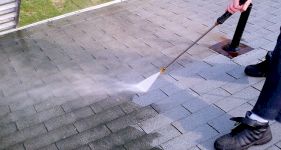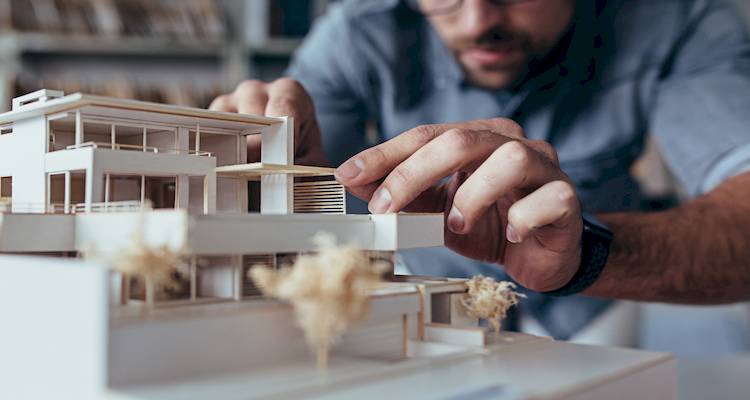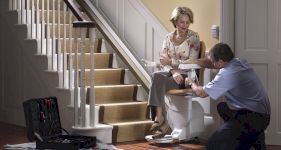Installing Heat Recovery System Cost
In this guide, we'll look at the costs of installing a heat recovery system and look at other relevant subjects.
Some of the additional topics we'll explore include the cost factors involved in the installation process, the various types of heat recovery systems and whether you can install one DIY.
Looking for a professional to install a heart recovery system? Take a look here.

£4,500
Table of Contents
- How Much Does It Cost to Install a Heat Recovery System?
- Supply Only Costs
- Additional Costs
- Labour Costs and Timescales
- Cost Factors of Heat Recovery System Installation
- What's Involved in Installing a Heat Recovery System?
- Can I Install a Heat Recovery System Myself?
- Building Regulations & Planning Permission for a Heat Recovery System Installation
- Types of Heat Recovery Systems
- Hiring a Heating Engineer to install a Heat Recovery System Checklist
- FAQs
- Sources
How Much Does It Cost to Install a Heat Recovery System?
In this article, we will look at the heat recovery system installation cost that you can expect.
A heat recovery system operates through a heat recovery ventilation system, typically located in a building's attic, roof space, or plant room. Rather than simply extracting air and replacing it with outside air, a heat recovery system extracts heat from the extracted air and then transfers it to filtered outside air.
The extract and supply air does not flow through the same pipes, so there is no cross-contamination of the various airflows. Instead, the heat recovery unit is linked to the room air valves via a ducting network throughout the building. This section will go over everything you need to know about heat recovery systems and their costs.
When determining a price for any heat recovery installation, several site-specific issues must be considered. This can include the property's age, the existing system, how challenging it is to access pipework, the level of insulation, and the amount of building/installation work required.
Whole house heat recovery systems are customised to each application and are based on the size of the house, the number of extract and supply points required, and the heat recovery unit's requirements. The type of MVHR unit will also be determined by the system variation used in the heat exchanger. Counterflow, crossflow, and rotary wheel are the three options.
So what is the cost of a heat recovery system? The cost of heat recovery varies from domestic to commercial installations, as one would expect. Residential heat recovery and ventilation systems might cost between £2,000 and £7,000 in general, depending on the amount of work required – such as pipework repair – and the size of the premises.
The cost of heat recovery in commercial buildings is more difficult to calculate, owing to the varying sizes and ages of the buildings.
The cost of the ventilation unit is one consideration, but the installation process is generally more complicated and often more invasive than that of other renewable technologies, with pipework widening to all offices in the building.
A small office environment may have comparable costs to residential properties, but larger businesses will undoubtedly be more expensive. For example, a major hotel chain recently probably spent £500,000 on retrofitting one of their big buildings, but the average-sized business will invest between £8,000 and £12,000.
Heat Recovery System Prices
| Type | Cost |
|---|---|
| A residential heat recovery and ventilation system | £2,000 - £7,000 |
| A major hotel chain | £500,000 |
| Big buildings | £8,000 - £12,000 |
Supply Only Costs
The MVHR unit will also be determined by the system variation used regarding the heat exchanger. Counterflow, crossflow, and rotary wheel are the three options.
The most common types of residential mechanical ventilation with heat recovery systems are counterflow and crossflow. Although some rotary wheel heat exchanger units are suitable for residential installation, they are more commonly found in commercial systems.
A counterflow heat exchanger costs between £2,000 and £8,000 on average. The price will be determined largely by the size of the unit, the brand, and the features and functions that it performs. Some will include intelligent regulations with summer bypass and frost protection elements.
On the other hand, others are more basic and simply perform the heat exchange between the extractor supply airflows. But, again, your budget may dictate which features are required.
Crossflow heat exchangers typically cost between £1,000 and £2,500 and function similarly to counterflow heat exchangers in that they both consist of heat plates that funnel both stale and fresh air.
However, counterflow heat exchangers use air flows that travel in opposite directions, whereas crossflow heat exchangers use air flows that cross each other. However, the opposing air flows never mix in both cases, and no contamination occurs.
Rotary wheel units are not frequently used in domestic MVHR installations. Their design lends itself better to larger buildings like those found in public buildings, hotels, and factories. However, some units can be installed in domestic settings and cost between £1,700 and £3,500.
The cost of installing an MVHR system includes a design process required for the system to function properly. Therefore, the correct and efficient installation of the MVHR will be dependent on the system's proper design.
Ducting for a typical 250sqm home will cost around £2,250, depending on the duct used. Flexi ducting, semi-rigid plastic, and even galvanised metal are all available in various sizes and qualities.
The MVHR unit itself will cost between £1,500 and £3,500, depending on the type and brand.
After the system is installed, it has to be commissioned, which means that a technician checks to make sure that it is working properly and that the airflow to each room is as it should be. This is known as system balancing. The cost of commissioning an MVHR system ranges between £400 and £800.
| Supply | Cost |
|---|---|
| A counterflow heat exchanger | £2,000 - £8,000 |
| Crossflow heat exchangers | £1,000 - £2,500 |
| Rotary wheel units | £1,700 - £3,500 |
| Ducting | £2,250 |
| MEHR | £1,500 - £3,500 |
Additional Costs
As has been the case throughout this article, the price fluctuates and is influenced by various factors. This section will look at each factor and how it affects installation costs.
Triple Glazing Cost
Triple glazing is more expensive but better at heat insulation, so it is most popular in Scandinavian countries and other cold-weather regions.
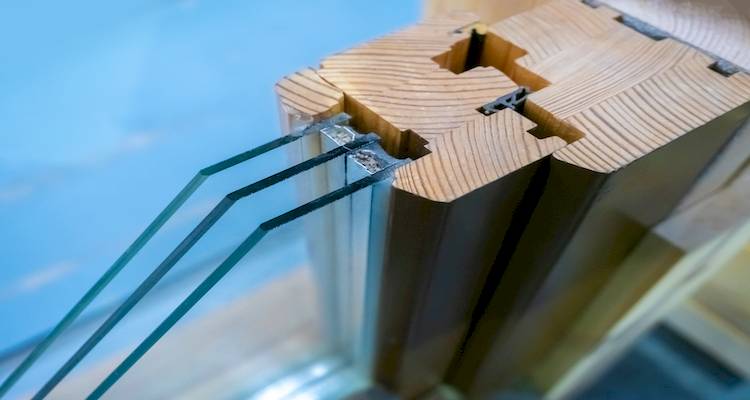
Double glazing is still more popular in the UK, but triple glazing is gaining popularity. This is because triple glazing can help reduce heat loss during the cold winter months; it performs the same function as double glazing, but better!
The average cost of installing triple glazing ranges from £2,000 to £7,000, depending on the size of the home and the number and style of windows installed.
If you would like further information, please refer to our guide on the costs of fitting triple glazed windows.
Solar Panel Installation
Solar panels range in price from £2500 to £9000 on average. The price range is so broad because several factors determine the price. For example, what type of solar panel are you looking for? How many panels will be installed? And how long will it take?
With all the prices discussed, it is understandable that many people consider the costs to be high, if not prohibitive. However, there are numerous advantages to having PV panels, such as how much money they can save you and, in some cases, even earn you money!
Furthermore, there are two major types of solar panels: monocrystalline and polycrystalline solar cells, each with its own set of costs and considerations. The former is thought to be the most efficient and lasting longer than other types.
If you would like further information, please refer to our guide on the costs of installing solar panels.
Roof Insulation
Roof insulation installation in the UK is expected to cost between £400 and £600, depending on the scope and size of the project. When calculating the cost of installing roof insulation on your property, there are numerous cost-influencing factors to consider.
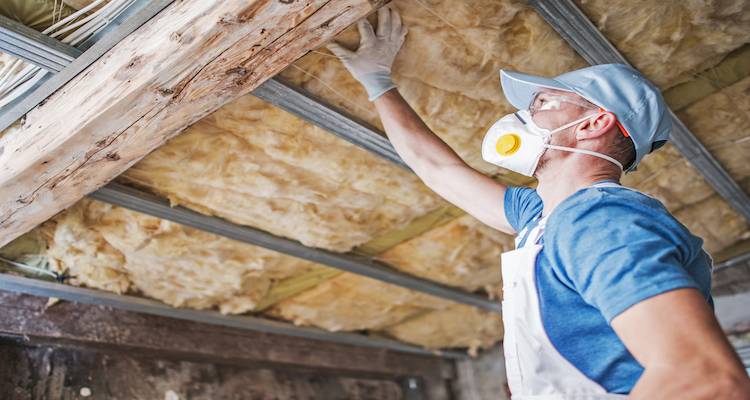
The type of roof typically determines the cost of installing roof insulation and the materials used. Several methods and materials can be used to insulate your property's roof.
If you would like further information, please refer to our guide on the costs of insulating a roof.
Labour Costs and Timescales
On average, mechanical ventilation with a heat recovery system takes two to three days to install. The exact duration of the job will be determined by the size of the property, the complexity of the installation, and the contractor's experience.

The simplest installations are in newly constructed properties with a good design and easy access. Retrofits on older properties, while not ideal, are still possible; however, the job may take longer due to the existing infrastructure that must be negotiated, and labour costs will most likely be higher.
The labour costs for installing mechanical ventilation with a heat recovery system will be split into the physical installation of the MVHR unit, associated ducting, and electrical components, as well as the labour costs for system design and commissioning.
Design
The design of the MVHR system is critical to its successful operation and installation. Therefore, a site visit by the designer is beneficial to building a design solely from plans or structural drawings.
Designing an MVHR system is easier for a new build than for a refurbishment or retrofit, and the earlier it is done in the building design, the better. However, careful planning and design are required because re-routing electrics and pipework are far easier than re-routing large ducting.
The labour cost for designing the system can range between £450 and £700, based on the particular of the installation.
Installation
An MVHR installation costs around £2,000 on average, but this will vary depending on the unit installed and the amount of ducting required.
Commissioning
The MVHR system will need to be commissioned after installation, which will cost between £400 and £800. This is a required post-installation procedure that ensures the system is balanced and that each room in the house receives adequate airflow.
Cost Factors of Heat Recovery System Installation
There is multiple cost affecting factors. Here we will go through the different types.
Unit Design
The heat recovery ventilation system you install will influence the cost.
Because they are the most efficient, counter flow heat exchangers are the most used in domestic settings. As a result, there are numerous variations on the market, with prices ranging from £3,000 to £8,000.
A basic unit will have four inlet/outlet points, two fans (one supply and one exhaust), a heat exchanger with filters, and a control unit. High-end models include built-in summer bypass, frost protection, Wi-Fi operation, and pre-heaters.
Accessibility
Each installation will be unique in terms of design and layout. While new construction is ideal for installing an MVHR system, it can also be installed in other situations.
Designing the system for a new property while still in the planning stages allows for the most flexibility in positioning the unit and the highest suitable layout for the ducting to the supply or extract points.
Similarly, there will be adequate and complete access to the building voids to fit the ducting and unit with no need to work around the current infrastructure when installing in new construction. The most common reason for retrofitting a heat recovery ventilation system is a lack of ducting access.
Manoeuvring around joists, pipework, and junction boxes is not only difficult and time-consuming, but it also has the potential to make the entire system inefficient.
Working around obstacles may necessitate more ductwork joints and bends, which will affect airflow. Because of the air resistance, the fan in the heat recovery system will have to work harder to compensate, resulting in more noise and higher operating costs.
Furthermore, the additional work of laying ducting on the existing property will result in higher labour costs.
Property Dimensions
In addition to the type of ducting used in your MVHR system, the amount of ducting required will have a cost impact. The size of the property and the specific MVHR unit required to ventilate the entire house will determine this.
Of course, the number of supply air valves required will be determined by the number of rooms.
Air supply and extract valves typically cost between £5 and £10, depending on if they are made of plastic or metal.
Property Location
As with most aspects of home improvement, the location influences the cost of services, contractors, and materials. Large cities, particularly the capital, will always command higher prices.

Due to the higher cost of living, owning and sustaining a home in London and the southeast of the UK is always more expensive than in other parts of the country.
House Airtightness
Mechanical ventilation with heat recovery systems once was thought to be only useful in passive houses or similar structures, but this is no longer the case. Although it is correct that the more airtight the building, the more effective the system, this does not preclude its installation in a standard home.
An MVHR system could provide adequate air quality and cost-effective heat recovery if combined with good insulation and effective action against air leakage.
Efficiency And Cleanliness
The length of a ducting system, the dimension or smoothness of the ductwork, and the number and radius of the bends all influence efficiency.
All these characteristics aid in the reduction of noise within the system and the hygiene of the ducting, which can have an impact on air quality.
Choosing the type of ducting should be done with caution because it is a mature decision; it will be challenging and disruptive to correct a cost-based mistake.
What's Involved in Installing a Heat Recovery System?
If you want to tackle this task as a DIY project, you should know how to install a heat recovery system. But, of course, the process depends on many factors. So here, we will go through the process when installing a heat recovery system.
If the airflow requirement exceeds 10 L/s or the length exceeds 15 metres, it is recommended that two pipes be installed in the plenum. In addition, radial ductwork can be installed beneath your loft insulation to provide superior heat retention.
Insulate any ductwork or Manifold/ Distribution boxes above the insulation in unheated attics with a minimum of 25mm thermal duct wrap.
Slim-line manifolds can be installed on concrete ceilings and require only a 100mm service void. Place supply plenums approximately 500mm from the corner of the wall.
Extraction plenums should be placed outside of showers and above the kitchen sink. Only extract from a room with an open appliance if there is an equal or higher airflow supply.
First Repair
Install the wiring for the controllers and the condensation drain from the unit after positioning the unit against a wall or vertical timber frame.
Install wall/soffit vents or roof vents and place distribution boxes in the desired location. Then install solid rigid ductwork between distribution boxes and the MVHR unit, and if possible, allow for insulated flexible ductwork for the MVHR unit's final connections.
Incorporate radial pipe into the distribution box, install pipe into ceiling plenum, cut to length, and secure with fixing band. Depending on the required airflow, one or two pipes may run from the distribution box to the plenum. Therefore, always check the plan to see if there are one or two pipes.
Install insulated rigid or insulated adaptable ductwork to external vents and seal all open pipes to prevent debris and moisture ingress.
The Second Fix
The ceiling should be trimmed. Install plenums to the height of the plasterboard, then air valves and all controllers. You should double-check that a condensation drain is installed. Turn on the unit and go through the setup procedures before checking the airflow rates and commissioning the system.
Can I Install a Heat Recovery System Myself?
Mechanical ventilation with a heat recovery system is a do-it-yourself project, and some systems are sold as DIY kits. A heat recovery unit, supply and extract vents, controller, ducting, plenum boxes, and adjustable air valves are included in the kits.
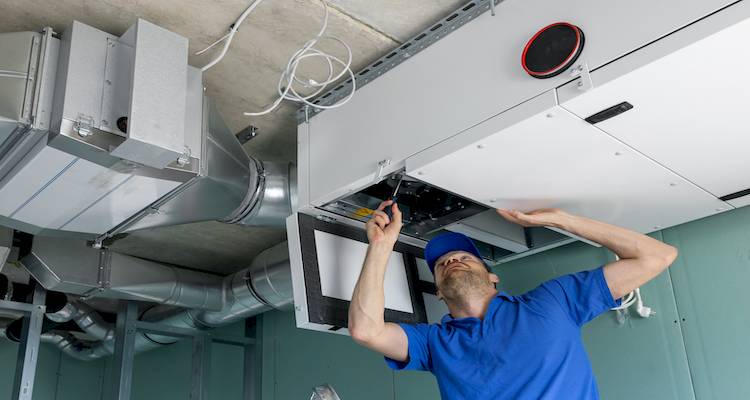
DIY Installation Risks
One risk of installing yourself is purchasing a kit for a three-bedroom house, for example. Nonetheless, each home will have different recommended airflow rates based on room size and the number of occupants. How certain are you that you can assess these aspects in your home?
The ducting that will feed the rooms with filtered and warmed air and eliminate the moist, stale air from the house is another important consideration when installing an MVHR system. Knowing the proper ducting diameter is critical to ensuring that the system functions properly.
Of course, if you purchase a complete kit, the ductwork must be compatible with the heat exchanger, but if you buy individual components, you must ensure that they fit together. In addition, the use of adaptors may cause airflow disruption and noise in the system.
You must also ensure that the ductwork runs have few bends and junctions to reduce air resistance, which can impede the system and cause a noise disturbance. The heat exchange unit should be placed so that the duct runs are as short and straight as possible.
For this reason, a central location in the house, such as a utility room or the loft, is frequently chosen.
However, in cold spaces such as lofts, the unit and ducting should be insulated to prevent condensation. Units can be wall-mounted or free-standing; in either case, access should be sufficient to allow for filter maintenance and replacement.
While there are heat recovery ventilation system pros and cons, you may not profit as much as you think if you buy a generic kit.
Building Regulations & Planning Permission for a Heat Recovery System Installation
You want to incorporate Mechanical Ventilation Heat Recovery technology into your next new construction, development, or redevelopment project. But first, before deciding, you must know how the technology cooperates with the UK building regulations.
So here's the information you're looking for, with the current British building act in mind.
Building Regulations Part E7 compliance for MVHR
Soundproofing is covered in Part E7 of the UK Building Regulations 2010. According to the regulations, "rooms for residential purposes shall be developed and constructed so that they offer reasonable resistance to sound from other parts of the building."
Part E7 of the Building Regulations also requires performance standards for sound insulation components used between floors and walls. However, keep in mind that some landlords and local governments may specify different maximum noise levels depending on the use of rooms and buildings in question. In addition, there are also Passivhaus-specific requirements:
35dBA in the installation or plant room; 25dBA in the living areas; and 30dBA in functional rooms such as the kitchen. If the door is a great, tight fit, the MVHR system can usually be installed in a hallway cupboard on a domestic property.
If the system is installed in a cupboard near the bedrooms or attic, the installation is more complicated from an E7 standpoint, and better soundproofing for the walls and ceilings may be required. But, again, size is critical for meeting UK building regulations.
It's also critical to get the main unit size right because overly small units tend to be very noisy. The valves in each room must also be carefully considered to keep sound to an absolute minimum.
Part F Building Regulations compliance for MVHR
Part F of the most recent Building Regulations addresses ventilation methods in new construction, developments, and redevelopments. MVHR technology assists architects, developers, and builders meet the UK building ventilation guidelines when properly specified, designed and installed.
A properly specified and installed MVHR system should recover heat at more than 90% in the main unit, with total electricity consumption of around 0.3W/m3h. Incorporate high-quality filters into the main unit for the best possible air hygiene. Experts recommend a minimum filter grade of F7 on the intake and G4 on the extract.
The system must be the correct size for the building. It must be large enough to provide ventilation for the entire structure, following Building Regulations. At the basic level, around 70%, plus standard level (100%) and increased level, the airflow should be controllable (130 per cent). It is also critical that the user controls include a 'boost' function for quick access to additional ventilation.
Types of Heat Recovery Systems
There are three types of heat exchangers essential components of mechanical ventilation with a heat recovery system. The heat exchanger variations are counterflow, crossflow, and rotary wheel, and the MVHR system cost will vary depending on which one you choose.
Counter Flow Heat Recovery System
Supply and exhaust air enters the heat exchanger from opposite sides in a counter flow unit, and while they traverse the heat exchange plates, they never physically meet. On average, 75-90 per cent of the heat recovered from the extract supply is transferred to the supply air.
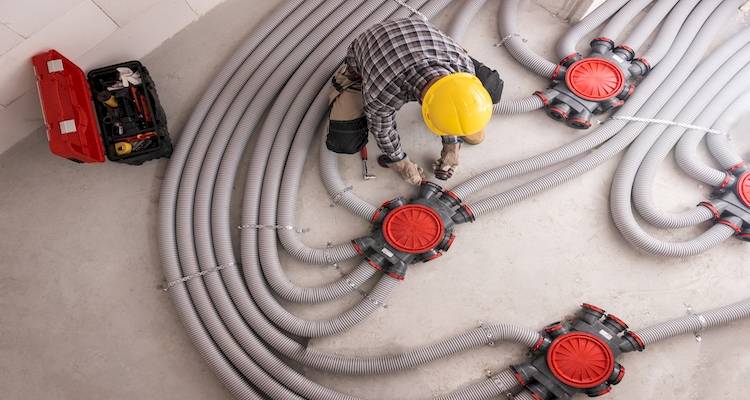
PROS
✔ Can handle large volumes of air
✔ Highly efficient to other systems
✔ Faster investment
CONS
✖ More useful in commercial and industries
✖ Risk of breakdown
Rotary Wheel Heat Recovery System
A rotary wheel heat exchanger works by absorbing the heat from the exhaust air and transferring it to the supply air as it rotates. A rotary wheel heat exchange unit for a ventilator with heat recovery costs between £1,500 and £3,500.
PROS
✔ Can handle large volumes of air
✔ Long life of aluminium rotary wheel heat exchangers
CONS
✖ Risk of contamination of the supply air from exhaust air due to lack of separation
✖ More useful in commercial and industrial settings
Cross Flow Heat Recovery System
A crossflow heat exchanger enables the supply and extracts air flows to intersect perpendicularly. They are isolated by aluminium plates that conduct heat from one to the other.
PROS
✔ Not as expensive
✔ 75% heat recovery
CONS
✖ Lower heat recovery
Hiring a Heating Engineer to install a Heat Recovery System Checklist
Choosing a reliable professional can be difficult, so we've put together some guidelines to assist you. First, we explain the various types of specialists you might come across while doing research and what they specialise in. In addition, we provide some pointers on how to find a reliable heating engineer.
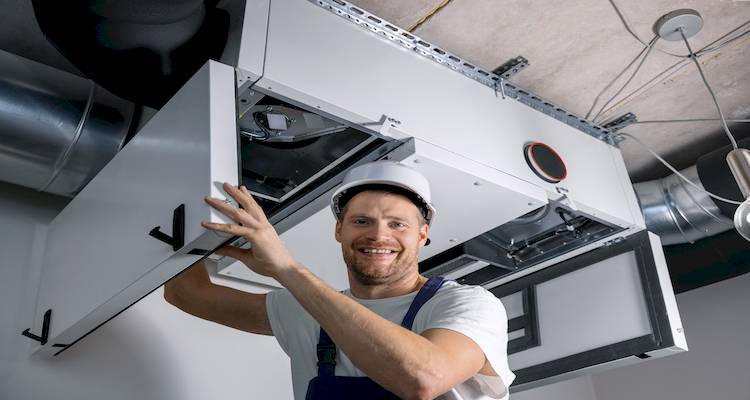
Consult with Your Friends and Family
People you know could recommend a boiler engineer. Your friends, family, and co-workers will not lie to you and will only recommend names and companies they have tried and are satisfied with.
Consult with Tradespeople
You can also get recommendations from other tradespeople you know or have worked with on similar jobs. They can assist you in locating a local boiler engineer, which is ideal.
When speaking with businesses, ask the tradespeople what they intend to do and how they intend to do it. If they can't explain it, they're not very good at their job or can't plan, which means your initial quote will most likely change and increase.
Look Through Directories and Review Sites
You can usually find true opinions of people who find good or bad engineers there, and you can easily sort through them. Furthermore, such places allow you to look for professionals in your field.
Compare Prices and Quotes
After researching and selecting a few specialists, you can touch them all and obtain quotes and prices to compare. Such jobs can add up quickly, so make a wise financial decision.
Choose a quote within your budget, so you are not caught off guard at the end of the service. Also, don't forget to inquire about any potential hidden costs that you may discover later.
Examine Other Customers' Testimonials
You can also read some other customers' testimonials. Look for them on third-party websites, as they can be trusted.
FAQs
How does a heat recovery system work?
Does a heat recovery system save you money?
Do heat recovery systems work?
Do heat recovery systems stay on all the time?
How long does it take to install a heat recovery system?
Sources
https://www.bpcventilation.com/blog/do-heat-recovery-systems-work/
https://www.renewableenergyhub.co.uk/main/heat-recovery-systems-information/is-installing-a-heat-recovery-system-worth-it/
https://www.bpcventilation.com/media/catalog/product/_/i/.installation_of_a_heat_recovery_system_with_unit_info_2016.pdf
https://www.renewableenergyhub.co.uk/main/heat-recovery-systems-information/types-of-heat-recovery-system/
http://www.ecoflowventilation.co.uk/mvhr-comply-building-regulations-uk/




